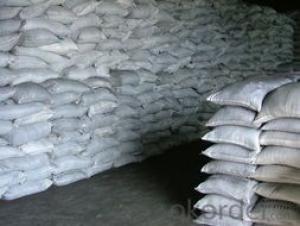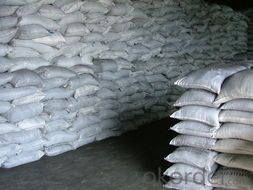FC 95% Calcined Anthracite CNBM China Product
- Loading Port:
- China main port
- Payment Terms:
- TT OR LC
- Min Order Qty:
- 0 m.t.
- Supply Capability:
- 100000 m.t./month
OKorder Service Pledge
OKorder Financial Service
You Might Also Like
Packaging & Delivery
| Packaging Detail: | 25kgs/50kgs/1ton per bag or as buyer's request |
| Delivery Detail: | Within 20 days |
Feature
All of our goods are made in the best quality of world famous Tianjin. All of our products are with High carbon, Low ash, low sulphur, Low Moisture.
Usage
The Calcined Anthracite Coal/Gas Calcined Anthracite Coal/Carbon Raiser is mainly used in steelmaking in electrical stove, screening water, shipbuilding sandblast to remove rust. It can reduce the cost of steelmaking effectively by replacing the traditional petroleum coke of carburant.Also can improve the Carbon content in steel-melting and Ductile iron foundry.
Specifications
Calcined Anthracite
Fixed carbon: 90%-95%
S: 0.5% max
Size: 0-3. 3-5.3-15 or as request
PARAMETER UNIT GUARANTEE VALUE | |||||
F.C.% | 95MIN | 94MIN | 93MIN | 92MIN | 90MIN |
ASH % | 4MAX | 5MAX | 6MAX | 7MAX | 8MAX |
V.M.% | 1 MAX | 1MAX | 1.5MAX | 1.5MAX | 1.5MAX |
SULFUR % | 0.5MAX | 0.5MAX | 0.5MAX | 0.5MAX | 0.5MAX |
MOISTURE % | 0.5MAX | 0.5MAX | 0.5MAX | 0.5MAX | 0.5MAX |
Size can be adjusted based on buyer's request.
Pictures of Calcined Anthracite
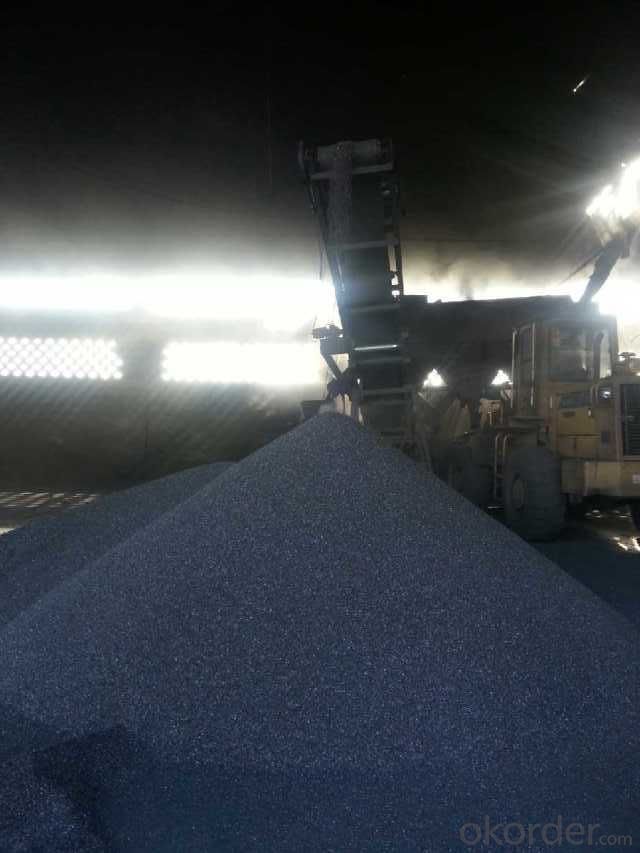
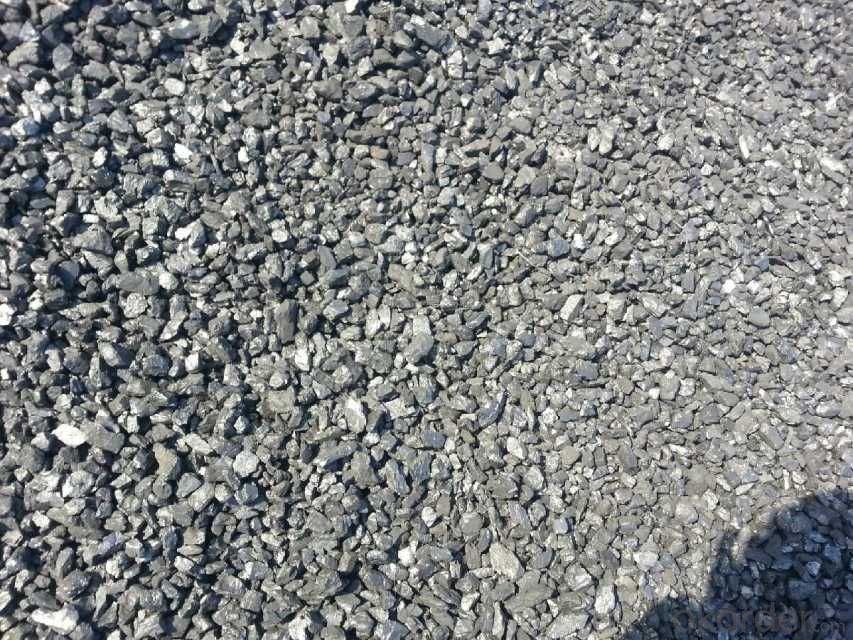
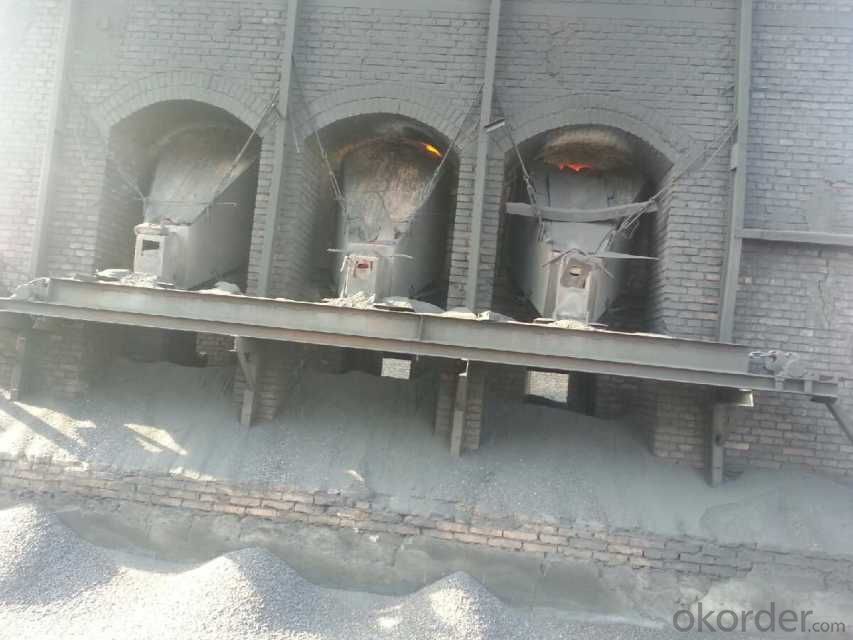
- Q: Are carbon fibers organic polymer materials?
- The fiber spacing is similar to artificial graphite and turbostratic carbon fiber.[5] levels between about 3.39 to 3.42A, the parallel plane between each carbon atom, as well as regular arrangement of graphite, and the layers are connected together by van Edward.Therefore, carbon fiber is an inorganic high polymer fiber with carbon content higher than 90%
- Q: What are the effects of carbon emissions on the stability of ice shelves?
- Carbon emissions have significant effects on the stability of ice shelves. As carbon dioxide (CO2) and other greenhouse gases are released into the atmosphere, they trap heat and contribute to global warming. This increased global temperature leads to the melting of ice shelves and glaciers. One of the primary effects of carbon emissions on ice shelves is the acceleration of their melting rates. Higher atmospheric temperatures cause more ice to melt, which in turn increases the amount of water flowing into the ocean. This added influx of freshwater can disrupt the delicate balance between the ice shelf and the ocean, potentially leading to ice shelf collapse. Additionally, carbon emissions contribute to the thinning of ice shelves. As the atmosphere warms, the air temperature above the ice shelves rises, leading to increased surface melting. This meltwater then flows into crevasses and cracks, causing further fracturing and weakening of the ice shelves. Over time, this thinning can make the ice shelves more susceptible to breaking apart. The melting of ice shelves due to carbon emissions also has indirect effects on the stability of surrounding ice sheets. Ice shelves act as a buttress, providing resistance to the flow of ice from the glaciers into the ocean. When ice shelves collapse or thin, this resistance is diminished, allowing glaciers to flow more freely into the ocean. This process leads to increased sea level rise, which has significant implications for coastal regions around the world. Furthermore, the loss of ice shelves can disrupt the ecosystem and biodiversity of the surrounding areas. Ice shelves provide a platform for various species, including seals and penguins, to breed and feed. When ice shelves disintegrate, these habitats are destroyed, impacting the entire food chain and ecosystem dynamics. Overall, carbon emissions from human activities have profound effects on the stability of ice shelves. The melting, thinning, and collapse of ice shelves contribute to rising sea levels, disrupt ecosystems, and have far-reaching consequences for coastal communities. It is crucial to mitigate carbon emissions and take proactive measures to protect these vulnerable ice shelves and the delicate balance they maintain in our global climate system.
- Q: What are the long-term effects of increased carbon emissions on ecosystems?
- Increased carbon emissions have significant long-term effects on ecosystems. One major consequence is the disruption of the Earth's climate system, leading to more frequent and intense extreme weather events such as hurricanes, droughts, and heatwaves. This can result in habitat destruction, loss of biodiversity, and increased vulnerability of species to extinction. Furthermore, elevated carbon dioxide levels in the atmosphere can contribute to ocean acidification, which harms marine ecosystems and disrupts the delicate balance of marine life. Overall, the long-term effects of increased carbon emissions on ecosystems are detrimental and pose a grave threat to the health and stability of our planet's natural systems.
- Q: What are the properties of activated carbon?
- Activated carbon, also referred to as activated charcoal, possesses a multitude of distinctive characteristics that endow it with high versatility and utility in a variety of applications. 1. Adsorption: The prominent attribute of activated carbon lies in its remarkable adsorptive capacity. Its porous structure grants it an extensive internal surface area, enabling it to efficiently adsorb molecules, ions, and impurities from gases, liquids, and solids. This adsorption capability renders it ideal for purposes of purification, such as water and air filtration, as well as the elimination of toxins and pollutants from industrial processes. 2. Porosity: Activated carbon exhibits an exquisitely porous structure characterized by an intricate network of interconnected pores. This porosity imparts a substantial surface area, facilitating the capture of a significant quantity of contaminants. The pores can be categorized into three types: micropores (less than 2 nm), mesopores (2-50 nm), and macropores (greater than 50 nm), each contributing to its adsorption capacity. 3. Chemical Stability: Activated carbon showcases exceptional chemical stability, rendering it resistant to degradation and disintegration when exposed to diverse chemicals or environments. This property ensures the maintenance of its adsorption capacity over extended periods and under harsh conditions, guaranteeing its efficacy and durability in diverse applications. 4. Selectivity: The surface properties of activated carbon can be modified to confer selectivity towards specific substances. Through various activation processes, such as physical or chemical treatments, the surface chemistry of activated carbon can be altered to enhance its affinity for certain molecules or contaminants, while reducing its affinity for others. This selectivity endows it with effectiveness for particular applications, such as the removal of specific pollutants or the capture of desired compounds. 5. Regenerability: Another advantageous characteristic of activated carbon lies in its capacity for regeneration. Once it reaches its adsorption capacity, it can be regenerated through heating or washing with appropriate solvents, allowing for multiple reuses before requiring replacement. This regenerability not only diminishes operational costs but also contributes to its sustainability and eco-friendliness. 6. Low Density: Activated carbon possesses a comparably low density, imparting it with lightweight properties and ease of handling. This attribute permits its utilization in various systems and devices without contributing excessive weight or bulk. 7. Thermal Stability: Activated carbon exhibits high thermal stability, enabling it to endure elevated temperatures without significant degradation. This property renders it suitable for applications involving high-temperature processes, such as gas purification or catalytic reactions. In summary, the diverse properties of activated carbon, encompassing its adsorption capacity, porosity, chemical stability, selectivity, regenerability, low density, and thermal stability, confer upon it the status of a versatile material widely employed in industries spanning water and air purification, gas separation, chemical processing, pharmaceuticals, and numerous others.
- Q: How is carbon used in the medical field?
- The medical field utilizes carbon in various ways, thanks to its unique properties. Activated charcoal, for example, is commonly used in hospitals to treat cases of poisoning or drug overdoses. Its large surface area allows it to adsorb toxins and chemicals, preventing their absorption into the bloodstream. Carbon also plays a role in medical imaging techniques like positron emission tomography (PET) scans. Carbon-11, a radioactive form of carbon, is used to label molecules such as glucose in PET scans. This labeled carbon is injected into the patient, and a PET scanner detects its distribution in the body. This technique aids in diagnosing and monitoring diseases, including cancer, by visualizing metabolic activity in organs and tissues. Additionally, carbon-based materials like carbon nanotubes and graphene are extensively researched for their potential in drug delivery systems. These materials can be modified to transport therapeutic agents, such as drugs or genes, to specific targets in the body. Carbon nanotubes, in particular, have shown promise in enhancing drug delivery efficiency and reducing side effects. Furthermore, carbon plays a vital role in manufacturing medical devices and implants. Carbon fiber-reinforced polymers are used in orthopedic implants and prosthetics due to their strength, flexibility, and biocompatibility. Carbon-based materials are also crucial in producing electrodes for medical devices like pacemakers, defibrillators, and neurostimulators. In conclusion, carbon has a wide range of applications in the medical field, from treating poisonings to improving diagnostic imaging techniques, drug delivery systems, and the production of medical devices. It continues to be a crucial component in advancing medical technology and enhancing patient care.
- Q: What is carbon footprint labeling?
- The system of carbon footprint labeling provides consumers with information regarding the carbon emissions associated with a product or service. Its purpose is to educate consumers on the environmental impact of their purchases and empower them to make more sustainable choices. Typically, this labeling includes a measurement of the greenhouse gas emissions generated throughout the entire life cycle of a product, encompassing its production, transportation, and disposal. Consequently, consumers are able to compare the carbon footprints of various products and make well-informed decisions based on their environmental values. Carbon footprint labeling plays a vital role in promoting sustainability and urging businesses to reduce their emissions. Furthermore, it raises awareness about the influence that individual consumption choices have on climate change and encourages a transition towards more environmentally friendly alternatives.
- Q: What is carbon coffee fiber?
- The carbon coffee fiber uses the coffee residue left after the coffee and is made into crystal by calcining, then ground into nanometer powder and added to the polyester fiber to produce a functional polyester staple, a coffee carbon fiber.
- Q: What is carbon neutral agriculture?
- Carbon neutral agriculture refers to farming practices that aim to balance out the amount of carbon dioxide released into the atmosphere with the amount removed or offset. It involves implementing sustainable techniques such as reducing greenhouse gas emissions, promoting carbon sequestration in soils, and utilizing renewable energy sources. The goal is to achieve a net-zero carbon footprint in agricultural activities, contributing to mitigating climate change impacts while ensuring food production and environmental sustainability.
- Q: What is the relationship between carbon emissions and deforestation?
- The close connection between carbon emissions and deforestation cannot be overstated. Deforestation involves the permanent removal of trees and vegetation in forests, often to clear space for agriculture, urbanization, or logging. This activity releases vast amounts of carbon dioxide (CO2) into the atmosphere, contributing to greenhouse gas emissions and ultimately, climate change. Trees play a vital role in mitigating climate change as they absorb CO2 from the atmosphere through photosynthesis and store it within their tissues. When forests are cleared, this ability to store carbon is lost, and the previously stored carbon is released back into the atmosphere. It is estimated that deforestation is responsible for roughly 10% of global greenhouse gas emissions. Moreover, the burning of forests, a common practice during deforestation, further adds to carbon emissions. When trees are burned, the carbon they have stored is released as CO2, intensifying the greenhouse effect. This is especially significant in tropical regions like the Amazon rainforest, where deforestation is rampant. On the flip side, reducing deforestation and promoting reforestation can help alleviate carbon emissions. By conserving existing forests and planting new trees, we can enhance carbon sequestration and lessen the amount of CO2 in the atmosphere. Forest conservation and restoration initiatives are essential elements of global climate change strategies, as they not only combat climate change but also safeguard biodiversity and provide crucial ecosystem services. In conclusion, the connection between carbon emissions and deforestation is evident: deforestation leads to increased carbon emissions, while efforts to conserve and restore forests help decrease CO2 levels in the atmosphere. It is imperative to prioritize sustainable land-use practices and lend support to initiatives that safeguard and revive forests to effectively mitigate climate change.
- Q: How is carbon used in the production of activated carbon filters?
- Carbon is used in the production of activated carbon filters because of its highly porous structure. This porous structure provides a large surface area for adsorption, allowing the carbon to effectively trap and remove contaminants such as chemicals, odors, and impurities from air or water.
Send your message to us
FC 95% Calcined Anthracite CNBM China Product
- Loading Port:
- China main port
- Payment Terms:
- TT OR LC
- Min Order Qty:
- 0 m.t.
- Supply Capability:
- 100000 m.t./month
OKorder Service Pledge
OKorder Financial Service
Similar products
Hot products
Hot Searches
